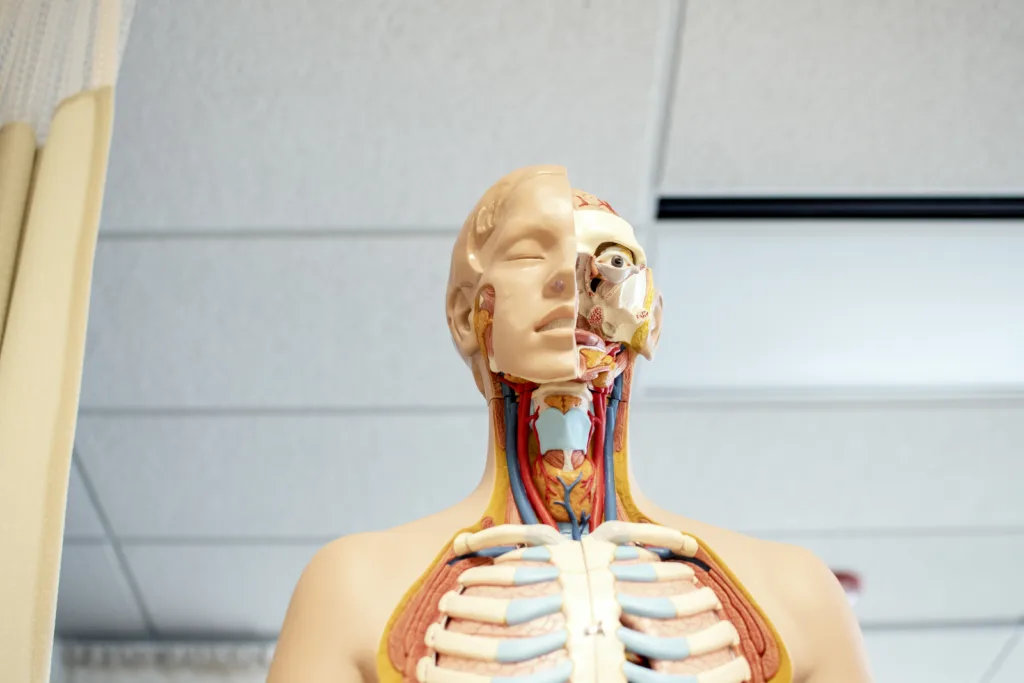Perforating canals, also known as Volkmann’s canals, are a crucial part of the bone structure that plays an important role in the overall health of the bone. These canals are tiny channels that run perpendicularly to the central Haversian canal and connect the blood vessels and nerves from the periosteum to the osteons.
The primary function of perforating canals is to transmit blood vessels from the periosteum into the bone and communicate with the Haversian canals. This network of canals ensures that the bone tissue receives a constant supply of oxygen and nutrients, which is essential for maintaining the daily metabolic needs of the bone.
Perforating canals are located in the outer layer of the bone and connect to the Haversian canals, which run down the center of the osteon. These canals are also responsible for providing energy and nourishing elements for the osteons, which are the basic unit of bone tissue.
The importance of perforating canals can be seen in their role in bone growth and repair. During the healing process, new blood vessels are formed to supply the affected area with the neessary nutrients and oxygen. The perforating canals play a vital role in this process by providing a pathway for the new blood vessels to reach the site of the injury.
In addition to their role in bone growth and repair, perforating canals also play a significant role in bone remodeling. This process involves the removal of old bone tissue and the formation of new bone tissue, which is necessary for maintaining the strength and integrity of the bone. The network of canals in the bone ensures that the nutrients and oxygen required for this process are transported efficiently to the osteons.
Perforating canals are a crucial part of the bone structure that plays an essential role in bone health. These tiny channels provide a pathway for blood vessels and nerves to reach the osteons and ensure that the bone tissue receives a constant supply of oxygen and nutrients. Their importance can be seen in their role in bone growth, repair, and remodeling. Understanding the function of perforating canals is essential for maintaining bone health and preventing bone-related diseases.
Where Are The Perforating Canals?
The perforating canals, also known as Volkmann’s canals, are minute channels that are present in the bone. These canals are located at right angles to the Haversian canals and transmit blood vessels from the periosteum into the bone. The perforating canals are an essential component of the bone structure, as they provide energy and nourishing elements for osteons. the perforating canals can be found within the bone structure and play a crucial role in maintaining the bone’s health and function.

Why Are Perforating Canals Important?
Perforating canals, also known as Volkmann’s canals, are essential for the proper functioning of bone tissue. These canals run perpendicular to the long axis of the bone and connect the central canals (Haversian canals) to the surface of the bone. The presence of these canals allows for the exchange of nutrients and waste products between the osteocytes (bone cells) and the blood vessels and nerves that run through them.
Perforating canals are important bcause they ensure that bone tissue receives the necessary oxygen, nutrients, and hormones needed for growth and maintenance. Without them, the osteocytes would not be able to carry out their metabolic functions, and bone tissue would become weak and prone to fractures.
In addition, perforating canals also play a crucial role in bone repair and remodeling. When a bone is fractured, the blood vessels in the perforating canals help to deliver the necessary cells and proteins to the site of the injury, promoting the formation of new bone tissue and facilitating the healing process.
Perforating canals are a vital component of bone anatomy, enabling the exchange of nutrients, waste, and signaling molecules necessary for bone growth, maintenance, and repair.
What Is The Difference Between A Central Canal And A Perforating Canal?
The central canal and perforating canal are both part of the structure of bone tissue. The central canal, also known as the Haversian canal, is the primary canal that runs through the center of the osteon, which is the basic unit of bone tissue. The central canal runs parallel to the long axis of the bone and contains blood vessels, nerves, and lymphatic vessels that nourish and maintain the bone tissue.
On the other hand, the perforating canal, also called the Volkmann’s canal, is a transverse canal that runs perpendicular to the central canal. The perforating canal connects multiple central canals, allowing blood vessels and nerves to travel between them. This perpendicular orientation of the perforating canal alows for the delivery of oxygen and nutrients to the deeper layers of bone tissue.
While the central canal runs parallel to the long axis of the bone and contains blood vessels and nerves, the perforating canal runs perpendicular to the central canal and connects multiple central canals, allowing for the delivery of oxygen and nutrients to the deeper layers of bone tissue.
What Do Perforating Canals Contain?
Perforating canals, also known as Volkmann’s canals, are channels within bones that run perpendicular to the central Haversian canals. These canals contain blood vessels and nerves that originate from the periosteum, which is the outer layer of the bone. The blood vessels and nerves within the perforating canals supply nutrients and oxygen to the bone cells and help to regulate bone growth and repair. perforating canals contain blood vessels and nerves that play a crucial role in maintaining the health and function of bones.

Conclusion
Perforating canals, also known as Volkmann’s canals, are an integral component of the bone structure. These tiny channels transmit blood vessels from the periosteum into the bone and communicate with the Haversian canals. The perforating canals play a crucial role in providing energy and nourishing elements for osteons, which are the basic structural unit of compact bone tissue. The presence of perforating canals ensures that the osteocytes receive sufficient oxygen and nutrients to maintain bone tissue’s daily metabolic needs. Understanding the significance of perforating canals is critical for comprehending the complex structure and function of bone tissue.
